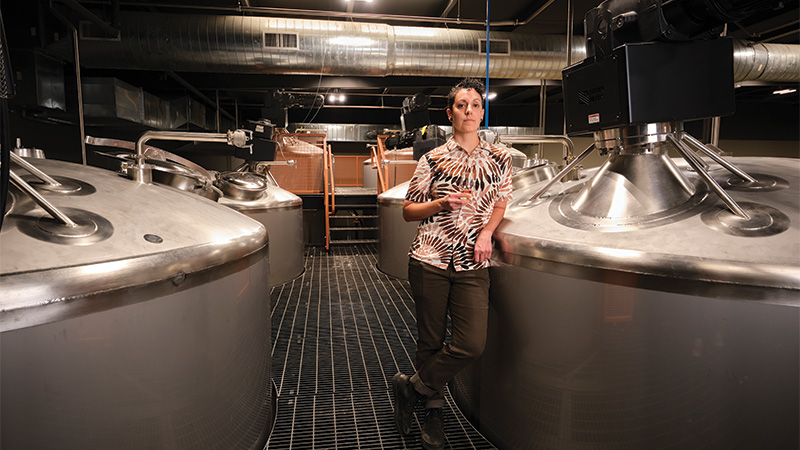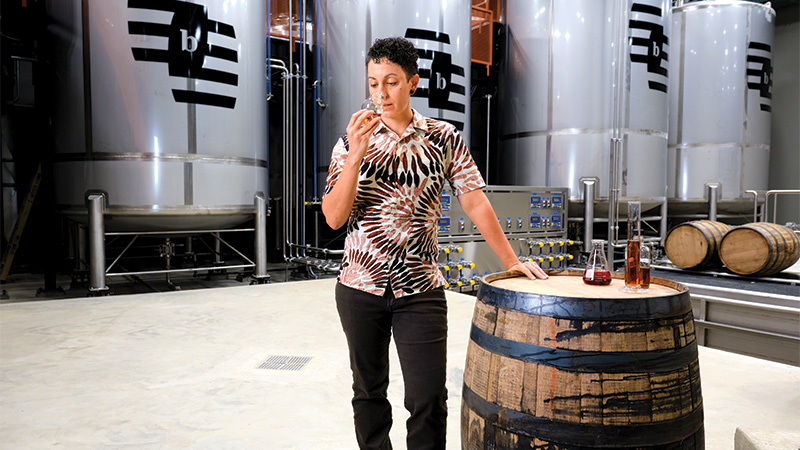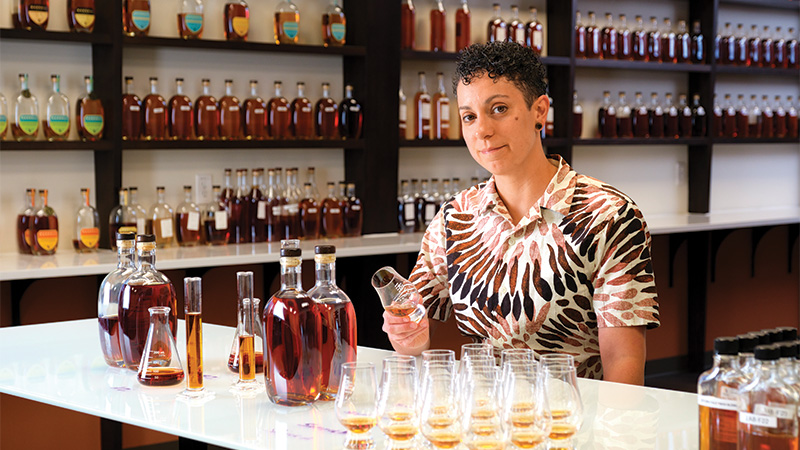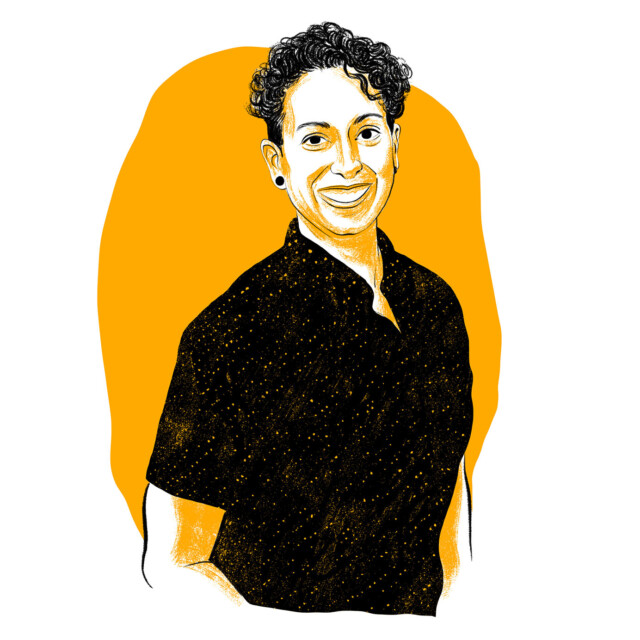This feature is part of our 2023 Next Wave Awards.
“My whole life I’ve been interested in flavor,” says Nic Christiansen.
Though she majored in graphic design at Northern Kentucky University, Christiansen’s early forays into flavor included working at coffee shops, studying and cooking under top chefs at restaurants in Cincinnati and Louisville, becoming a Level 1 sommelier, and eventually serving as beverage director at Louisville’s Butchertown Grocery.

Despite growing up in Kentucky, Christiansen had never really considered bourbon until then. But working at the acclaimed restaurant, curating bourbon tasting menus, putting together whiskey cocktails, and building one of the city’s better single barrel collections would change the trajectory of her career.
“It was there that I realized bourbon is not just one thing,” she says. “It can have different mash bills, different distillation methods, and everything on the shelf can have different flavor profiles.”
By 2019, Christiansen had set her eyes on shifting to a local distillery. And when Joe Beatrice, founder of upstart Barrell Craft Spirits, sat at the Butchertown Grocery bar one day, Christiansen decided to will her next job into existence.
Even by then, Barrell had shaken up the bourbon scene with its innovative releases. Not a distiller, but a blender, finisher, and bottler of sourced spirits, Barrel had impressed many drinkers with a recent release called Dovetail, composed of a blend of bourbons finished in Cabernet casks, port pipes, and blackstrap rum barrels.

“You could taste all three, but you could still taste the whiskey,” Christiansen recalls. “A lot of barrel finishing at the time was simply covering up whiskey, not working together to create a new product that is delicious.”
Christiansen started as the company’s single barrel manager, helping bars, restaurants, and private groups make the sorts of “picks” that have become de rigueur in the industry these days. Eventually, she would start blending herself.
The first blend that may have put her on the map was Seagrass, a no-effing-way blend of American and Canadian rye whiskeys finished in Martinique rhum agricole casks, apricot brandy casks, and Madeira barrels. Beatrice had tasked her and Tripp Stimpson, Barrell’s chief of distillery operations, with producing a rye-based whiskey that evoked the feeling of the Northeastern coast, with salinity coming off the ocean and the grass blowing in the wind.
Released in early 2021, Seagrass became an immediate sensation among critics, drinkers, and online whiskey fans who quickly elevated its secondary market price. It was such a hit, in fact, that other companies have knocked off the idea of “Seagrass” finishing, in much the same way that “cigar batches” became a viral sensation.
“It’s flattering,” says Christiansen, but these ersatz blends are not the same thing.

Blending and finishing are a delicate art, not simply about throwing wacky barrels together and hoping they work. In this era with so many small whiskey companies trying to make a name for themselves, gimmicks — especially blending and finishing gimmicks — run rampant.
Despite her out-there blends, Christiansen’s work is proof that the best gimmick will always be simply making delicious, one-of-a-kind whiskey.
